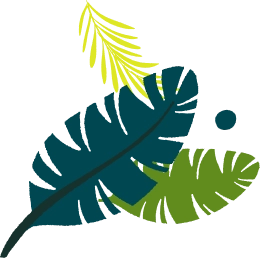


The Ao Dai is Vietnam's iconic traditional dress which is basically a long tunic with high slits worn over loose pants. It's the national costume you'll see in wedding photos, temple visits, and iconic Hoi An streets. First-time visitors often ask: "How do I wear one? Where do I buy it? How much does it cost?"
Our guide answers all three. Whether you want to rent one for a photo shoot ($5-10), get tailored for a wedding ($20-50), or just understand this stunning cultural symbol, you'll find everything here.
Let's start with a quick price breakdown, then dive into the history, where to find them, and how to wear them properly.
| Question | Answer |
| Rental cost | $5-10 USD (1 day) in local markets |
| Rental cost (tourist areas) | $10-15 USD (Hanoi, Hoi An) |
| Tailored ao dai cost | $20-50 USD (budget to mid-range) |
| Luxury tailored | $50-150+ USD (designer tailors) |
| Best cities to buy | Hanoi, Hoi An, Ho Chi Minh City |
| Best markets | Ben Thanh (HCMC), Hoi An night market |
| Most popular colors | White (students), Red (weddings), Gold (formal) |
| Wearing occasion | Weddings, Tết, photo shoots, formal events |
| Time to tailor | 3-7 days (express options available) |
| Rental vs Buy | Rent if visiting <1 week, buy if staying longer |
The Áo Dài (Ao Dai) originated back in the 18th century during the Nguyen Dynasty and kicked off with this five-part dress called áo ngũ thân, which later developed through some French and Chinese influences into the sleek two-piece outfit that we see today.
Whereby, in the 1930s, some of the artists, like Le Mur Nguyễn Cát Tường, showed a sleeker and more sophisticated version, which people refer to as "Lemur Áo Dài"; this combined Western tailoring with traditional aesthetics. This would lead to the modern version of the Áo Dài that exists today.
Modifications in the mid-20th century by a host of designers, including Le Pho and Tran Le Xuan, moved toward a more bateau neck and a closer-to-the-body cut. Whichever the political regime and however the fashion winds blew, Áo Dài remained an essential carrier of culture.
The Áo Dài (Ao Dai) is super symbolic of Vietnamese identity, showing off the likes of modesty, femininity, and elegance. It is a long tunic, with high slits above the loose pants, giving freedom of movement with grace. Each color and fabric has some special meaning:
White: Youth and purity. Worn by students.
Red: Prosperity and good luck; widely used in wedding affairs and in the New Year.
Gold: A royal hue, historically reserved for monarchs.
Versatile wear, indeed, which showcases how it can still be super relevant today—from being worn to high-profile events to even everyday jobs in teaching and hospitality.
Ao Dai works for all sorts of occasions, such as:
Marriage/Wedding: Brightly colored and very elaborately detailed Áo Dài are worn by couples, usually together with that traditional turban, the khan dong.
Events: It is worn on cultural occasions such as Tết, the Lunar New Year, either to the temples or to family occasions.
Professional settings entail this kind of dress code used by office workers, airline attendants, and students alike.
For tourists, an Áo Dài worn during a visit to Vietnam is a respect given to its culture. Many choose this for photo shoots, especially around highly iconic locations such as Hoan Kiem Lake in Hanoi or the streets of Hoi An with their beautifully decorated lanterns.
Tailored Áo Dài is one of the arts in Vietnam. Visitors can get one tailored at famous tailoring centers like:
Hanoi does have famous places, such as Tien Trach and Thanh Mai.
Hoi An boasts speed with high-quality work that meets the needs of impatient tourists.
Ho Chi Minh City: All kinds of fabrics and ready stuff are available at Tan Dinh and Ben Thanh markets.
Lately, designers have been putting a new spin on the Ao Dai: adding tweaks such as above-the-knees hemlines, cool necklines, and chilled fabrics. None of these takes away from the essential Ao Dai-is-old-school-meeting-new feel.
Rent or Buy: Scores of tailors and shops around town will let you rent an Áo Dài for events or photo shoots. If you are a tourist in Vietnam, always prefer to rent because it's highly likely you will not wear it again once back home so why spend so much money to buy it when you can rent!
It should not cost you more than $10 (USD) and if you do some bargain hunting in local markets a bit away from tourist hot spots, then you might get it under $5 for one day.
Take the Cue: Match color and style to the affair; avoid red at weddings unless part of the wedding party.
Accessories: Finish the Ao Dai with a non la, or Vietnamese conical hat, for realism, or use a khan dong.
Get the latest information about our tours and special offers!